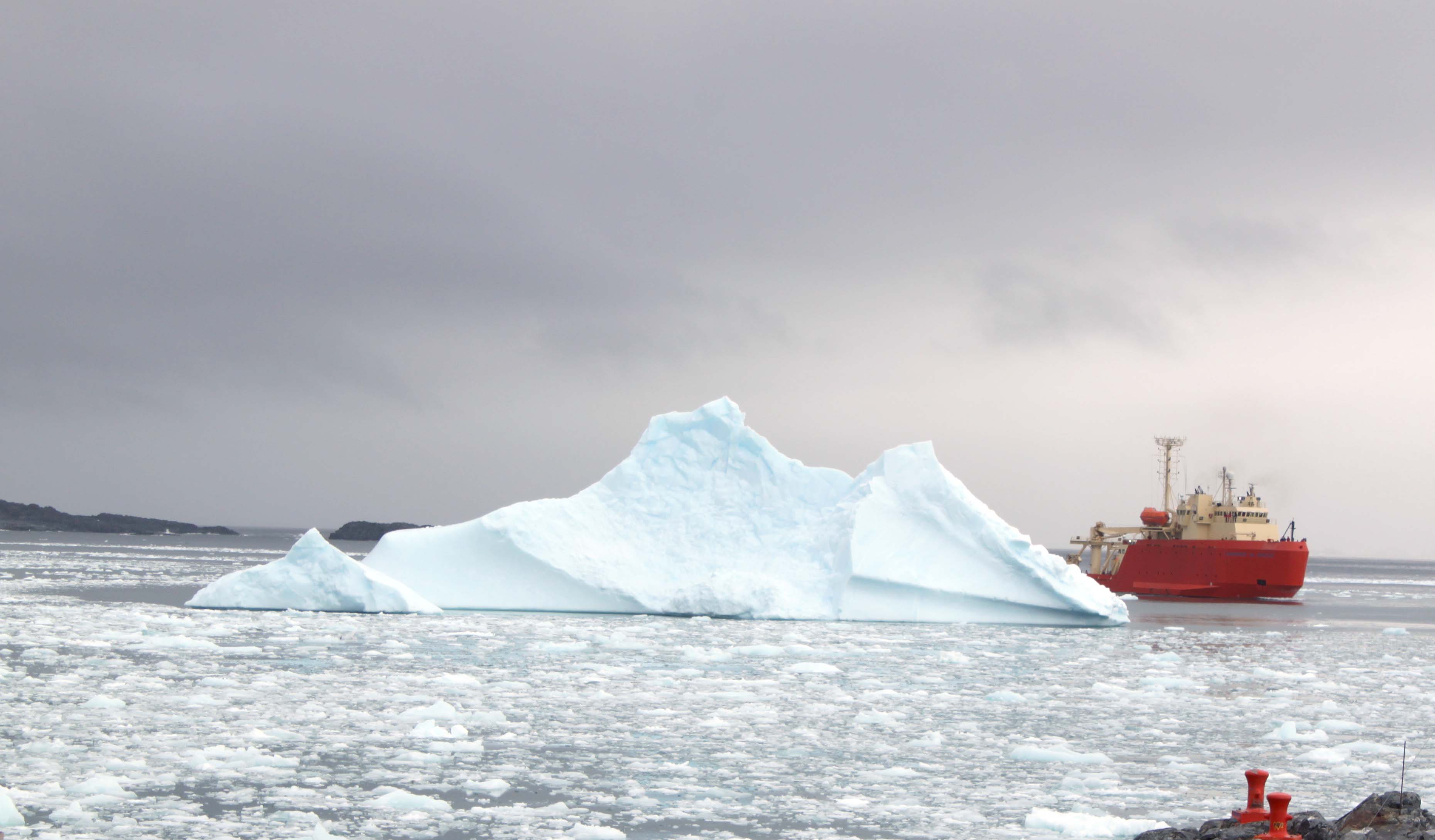
The Laurence M. Gould sailed back into the Palmer Station world last week bearing gifts from the real world - several hundreds of pounds of fresh produce! That night the meal buffet line featured a huge stainless steel bowl its interior gleaming green with crisp lettuce, brightened by offerings of crunchy sweet carrots and remarkably red and luscious tomatoes. A very welcome sight to savor, much less consume, after exhausting the last shipment of salad makings weeks ago. Sweet and succulent watermelon followed for dessert, what a treat!
Nature's treats continued the next morning with bananas, cantalope and honeydew melon. Small bunches of green grapes were happily snatched up at lunch along with brilliant wedges of avocado. Subsequent meals have all included fresh alternatives to the usual canned and frozen vegetables and fruit and will continue as such until depleted and until next time when the ship returns from Chile (late April). Station routine is always disrupted when the ship is in 'in town' but delivering a bounty of 'freshies' puts a smile on all faces offsetting the minor change in pace.
The summer support staff no doubt experienced mixed emotions seeing the LMG materialize behind the iceberg dominating Arthur Harbor in final approach to dock. Twenty-some folks have bonded together as the Palmer family in the months since their arrival this past October. Most of the fresh faces lined up along the rails of the LMG were Palmer's summer family counterparts - the' winter-overs' - who will take over the many jobs that keep the station running. The winter-overs will be here until next October when they trade out with the incoming summer crew. This semi-annual Palmer cycle is bittersweet, bringing both joy and sadness when the seasonal family departs.
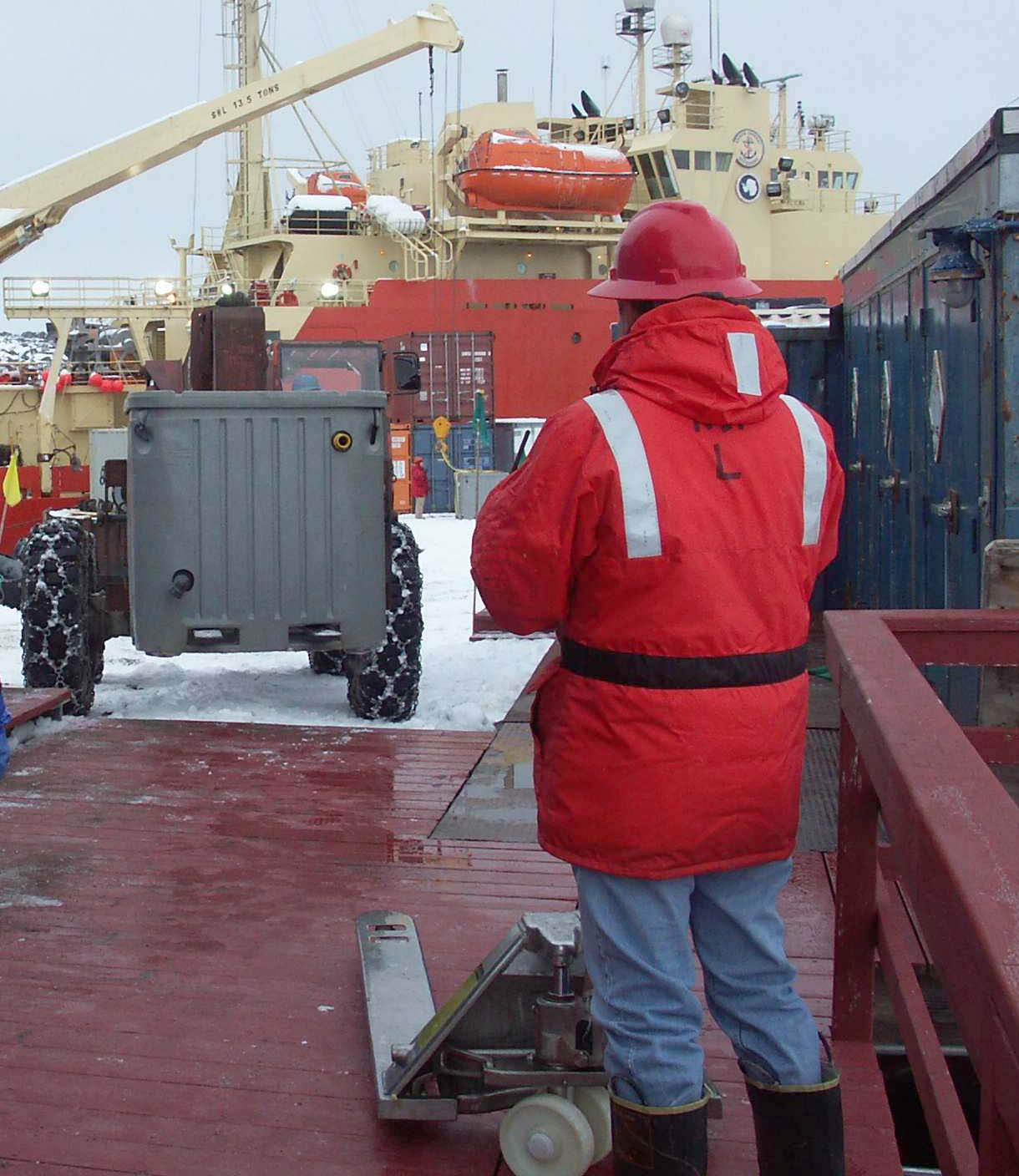
Among those fresh faces aboard the Gould was a new science project with whom we will share the lab facilities. Three scientists, John Postlethwait and Thomas Desvigne based out of the University of Oregon and Bill Detrich from Northeastern University don't need much space themselves but they picked up close to 100 individuals on the sail south from Chile. As if the station weren't crowded enough! Well at least these new station residents will not render the dining room standing room only nor devour the precious freshies – they will however contribute to the population in the Aquarium Building. The large seawater aquaria are now up to their gills with those fish collected enroute.
Our project's specimen collecting is infinitely much less involved than that of the fish project's. We do our collecting with 2.5 miles of station, in shallow water using scuba gear and from the 15 foot inflatable zodiac that we pilot ourselves. The fish folks have traditional fishing grounds hours from here, in deep waters requiring steel cables and powerful winches to lower/raise nets and traps deployed to deep depths from the 230 foot LMG with Captain and crew of at least 20.
Additionally, getting our collections from project zodiac to the Aquarium Building involves just a few of us hand-carrying buckets to the Aquarium Building. Not the case for the fish – most of which are too big for a bucket not to mention too fragile to tolerate excessive handling. Fish, once brought up from their native watery home by the LMG winch are gently placed into large seawater tanks for transport back to station. After docking (even before people or freshies come off) the ship's crane operator tenderly lifts the 500 gallon tanks onto the pier. Station folks on the pier with tag lines skillfully guide the now airborn tanked fish to minimize swaying or jerking. Once softly set down, the tank (with a built-in pallet on the base) is carefully forklifted on one the station's four wheeled tractors over to the wooden deck walkway alongside the Biolab.
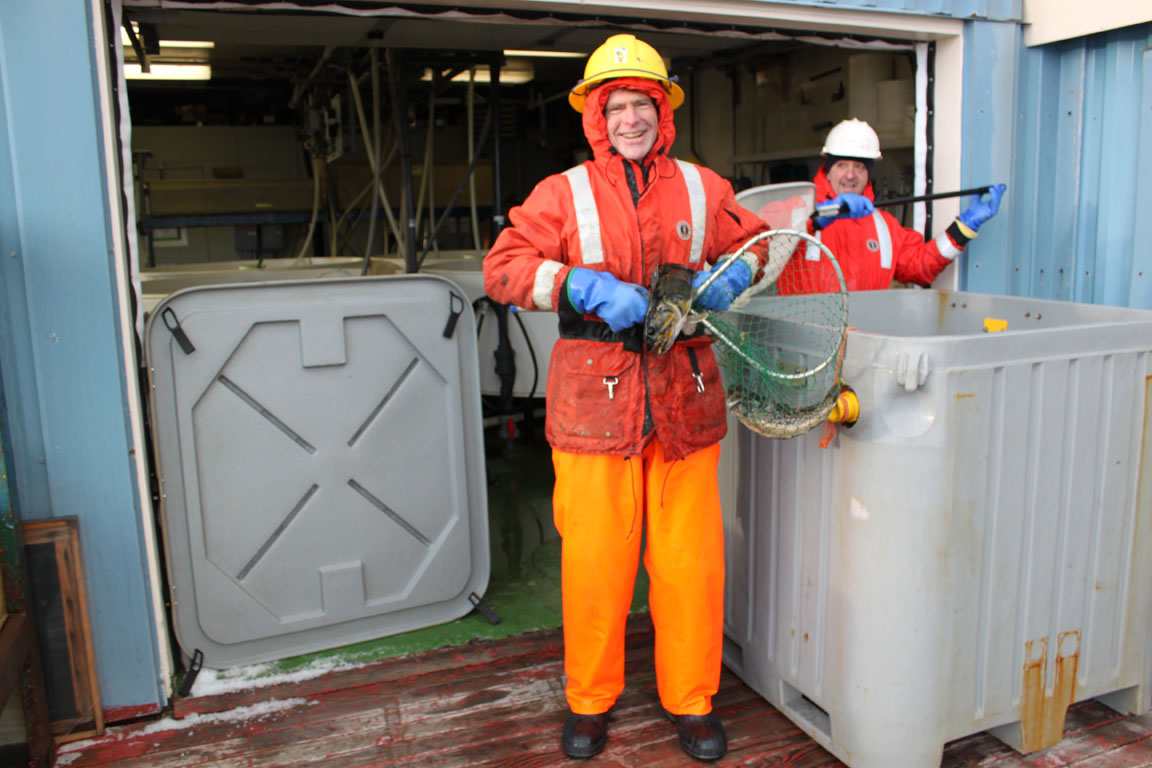
John (in photo at right with a fishy friend; photo taken in a previous season) and crew, along with many others then step up with a hand operated fork lift, wheeling the aquaria over to the Aquarium Building. The fish are then transferred one by one to the station's large round aquaria both inside and outside the building. The process is repeated until as many as 6 fin-filled tanks are transferred from the LMG to the station. What an amazing ballet of strength, finesse and most of all well-orchestrated cooperation between the ship and station in support of science.
The majority of the fish captured are one of two relatively closely related species - Notothenia gibberifrons and Chaenocephalus aceratus. N. gibberifrons, gibbie, for short is a type of Antarctic rock cod. In a previous season I used a cousin of this fish in some of our experiments. The gibbies new on station are bashful and would not let me photograph them. In lieu, at left is an underwater image taken a few years ago by diving,
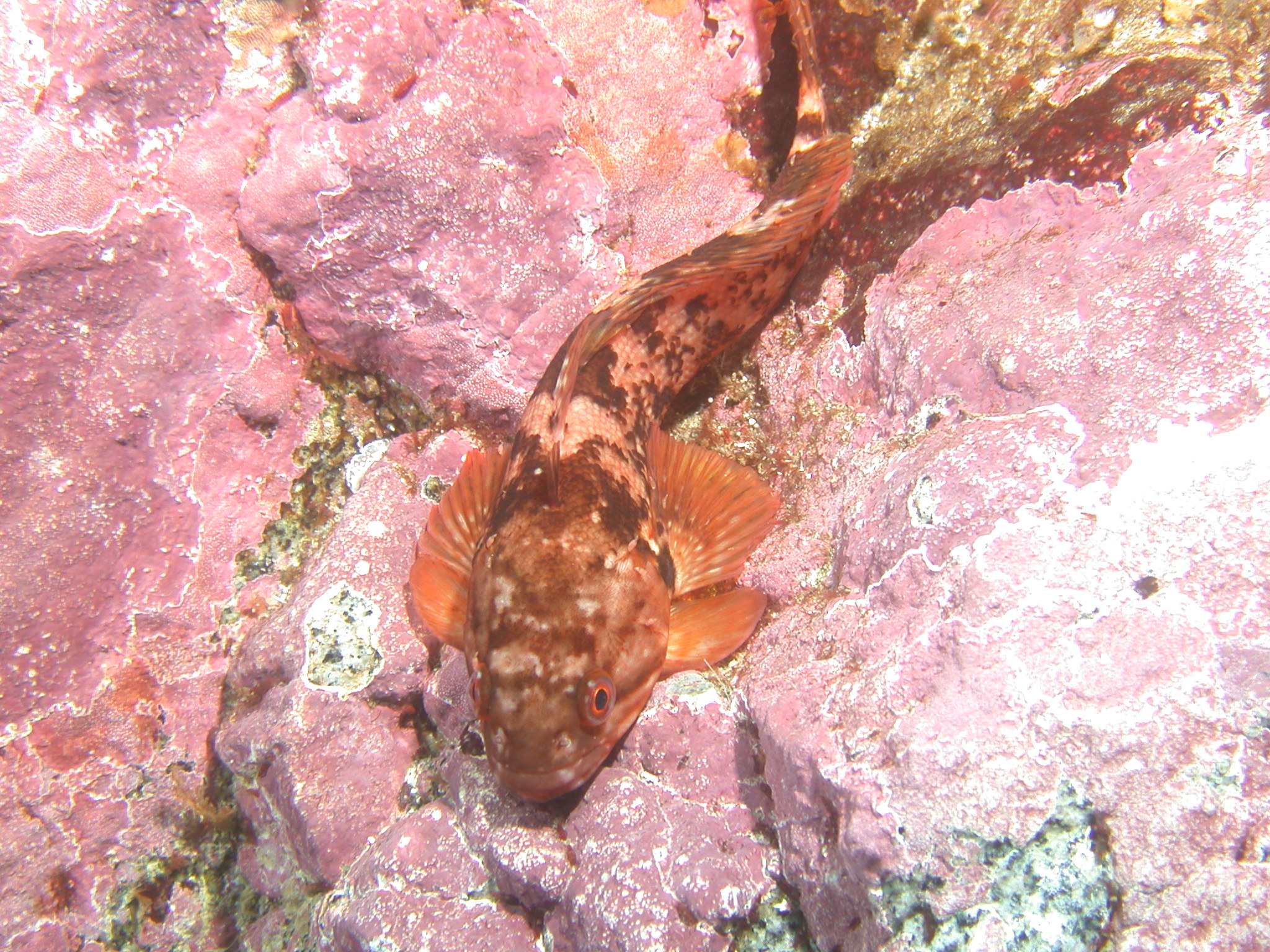 scientist Bill Baker of some kind of rock cod.
scientist Bill Baker of some kind of rock cod.Chaenocephalus aceratus is a member of a really cool family of fish known as ice fish. Fish biologists usually capture the black-barred, rounded snout member of the family. John, Bill and Thomas were surprised to capture another ice fish not usually seen along the Antarctic Peninsula. This icefish is found in waters around South Georgia, a South Atlantic island hundreds of miles north of the Peninsula. The South Georgia is bigger than black-barred and has a pointier snout as the image right indicates. The scientists speculate that the increased numbers of the South Georgia icefish down in our neighborhood is yet another example of earth's changing climate. They also speculate the presence of this bigger northerner may have a negative impact on the native black-barred icefish.
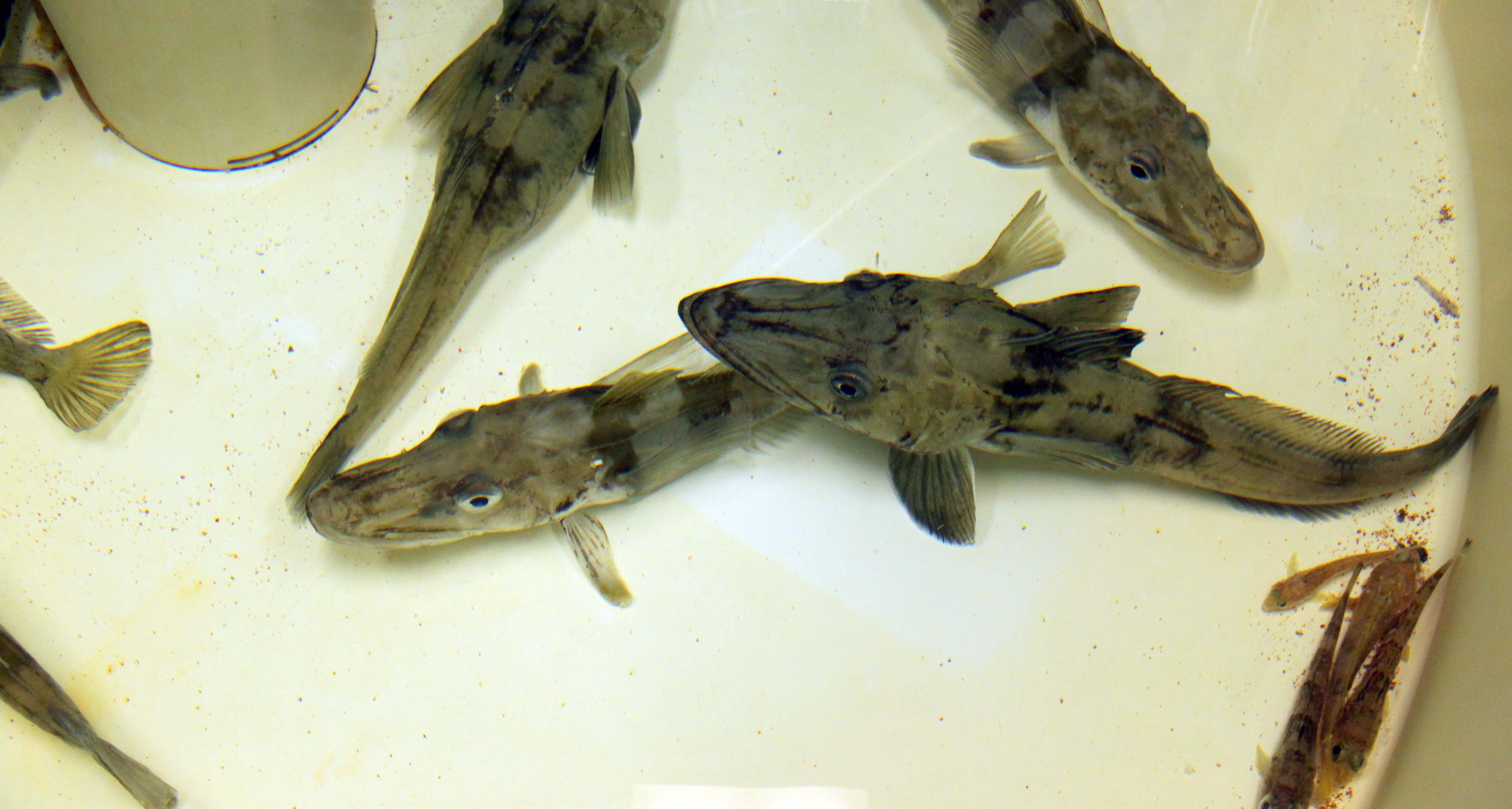
Ice fish of any species are not only unique among fishes, but also among vertebrates in general worldwide, in that they have no hemoglobin in their blood cells. It is the hemoglobin molecule that gives our blood the red color. Icefish lack hemoglobin so their blood is translucent.
Icefish also have a skeleton is weakly hardened. The reason for that is complicated, but involves eons of living on the bottom and gentically losing a swim bladder. It is the swim bladder that gives fish buoyancy, the ability to swim up in water column and/or just hang out at a certain depth above the bottom. (You probably know that sharks lack a swim bladder and similarly either swim or sink.) In order to get up off the bottom, in search of food or a mate, icefish over time developed a lighter skeleton. By contrast, the rock cod skeleton develops and hardens in ways similar to that of humans. Palmer Station's freshly arrived fish scientists plan extensive experiments over the coming months to study the embryonic development of the both the icefish and the rock cod with hopes of elucidating the various genes that control skeleton formation. With genetic clues in hand, they ultimately hope to find what controls bone diseases in humans, particularly the diseases of osteopenia and osteoporosis. In the meantime, be sure to keep your bones strong and healthy by daily doses of calcium-rich dairy and freshies (kale, broccoli, collards (included in today's lunch!), etc). I'm off to get a snack yogurt....
Send comments and questions to